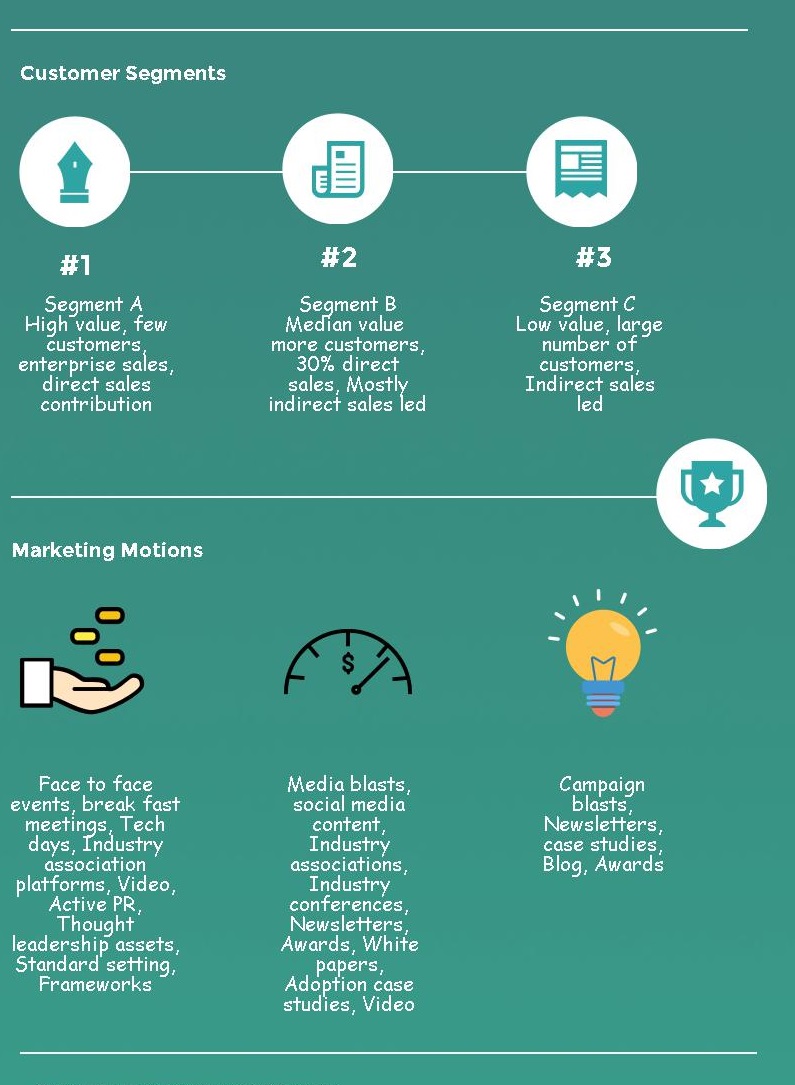Robert De Nero and Anne Hathway starer “The Intern” has a particular scene wherein the sales analysis shows the company has been spending more marketing dollars on low value segments and practically nothing at all on high margin low volume segment. Does not this sound familiar? While companies realize Sales and marketing need to be tightly aligned, but that seldom is the case. A senior marketing director in a recent conversion blurted out that while her marketing budget has increased YoY, the ROI seems to be elusive. What was bothering her was the fact the company spends substantially in curated events managed by respected analysts, and yet sales find the coverage insufficient.
Companies spend a fortune on the conferences and events but the outcomes belie expectations. It is not surprising for many corporates to find 75% of the participants who attended their events came for free lunch or a swanky dinner. Many of the participants may not be the decision maker or influencers, but pretty junior in their organization. Corporate gifts, industry exhibitions cost a dime, and yet ineffective. Albeit companies continue to pursue many of these acts they are afraid to pause and question fundamentals. What is the objective of the event?. Why this city and this hour?, How this format will help sell their ware?. Unfortunately, many leaders want to just follow the herd. Therefore it is not surprising when studies across industry indicate:
- 50% of marketing budget is totally wasted
- Only 34% of feel their content marketing works
- 25% had no marketing strategy
- 44% had no alignment between various marketing media
So how can companies ensure their marketing dollars are well spent and drive intended sales outcome. On the outset, it is important to realize marketing function serves three objectives. These are inform, influence and advocacy. Any marketing activity is to help consumers associate with the brand, help differentiate its offerings and seek higher revenues. Companies use various marketing assets to communicate to the interest group their unique existence, product/service offering set, pricing and other advantages. The objective is maximize reach at an affordable cost. Companies use several approaches to drive influence. Awards, citations, sponsored industry events, directed online community forums, endorsements are all effective mediums of influencing consumers. Advocacy is to enlist willing individuals who would eschew the role of brand ambassadors and drive positive word of mouth.
Different marketing assets serve different purpose and effective at different stages of sales cycle. Assets such as breakfast meeting facilitates more personalized one on one discussion that may be more effective in later stages of sales cycle. On the other hand, assets like newsletter or blog may be more useful in the early stages of sales cycle. Marketing assets also vary by their cost and impact. Some of these cost a dime and more effective to lock-in, while some may be low cost approaches to increase reach only.
Companies can realize better return on investments in their sales and marketing when these functions are congruent and well-coordinated. Congruency can be gained by ensuring same goals drive their quarterly activities, common goals entwine both functions at various levels and incentives encourage them to support each other. Coordination improves when event plans, promos, content marketing and other assets are aligned with sales motions. It is important to realize sales motions differ across segments within a company. Segments vary on the “value” of purchase and the number of customers in that particular segment. It is common to have a segment A that has few numbers of customers with a high purchase value. B and C segments are those with lower values of purchase and incumbent sizes. Each of these segments exhibit different sales behaviour. Purchasing cycles may be longer and more formal in Segment A, while the decision making could be shorter in Segment C. Sales may have to interact and influence multiple owners in enterprise segment. Order qualifying criteria may not be just enough in Segment A. Marketing must be able to push the company over to order winning plateau.
Segment A requires an enterprise sales approach where formal decision structures and vendor registration and assessments exist. Customers in this segment may be well informed about the happenings in the markets, and well-endowed to invest high ticket investment. Many customers in this segment may already been served by your competitors and would only move if there is a compelling value proposition in terms of cost, or innovation advantage. Sales function is completely managed by direct sales as relationships and continuous coverage matter to enter and grow the revenues. While inside sales functions support the direct sales with deeper profiling of people and secondary data analysis, direct sales has a key role in engagement of the segment.
Customers in segment A place a high premium on scalable and proven solutions. Prior experience and in depth expertise of the vendor play a key role in awarding the project. Marketing platforms must facilitate experience sharing and credibility reinforcing functions for direct sales to influence and close deals in this segment. Thought leadership vehicles including standards, industry frameworks and innovation ideas fly well in face to face meetings with the customers. Breakfast meetings, Industry association, standard setting bodies, and Knowledge sharing conferences serve as valuable platforms for direct sales to position the company at state of art knowledge. These platforms allow discussions to be personalized and centred on solving the problems the clients face, hence meeting service immediacy.
On the other hand, segment C, which has large number of customers with low ticket value may need a marketing and sales approach where the total transaction costs are optimised. It is practical to have inside sales as the champion to host and on board customers in segment C. Marketing functions role for this segment is to improve the reach across the market and reuse the content to improve the richness of various marketing assets. Companies can improve the reach and engagement with Segment C by adopting a consistent campaign blast policy. Mail them a newsletter, case studies and customer wins to increase awareness about your brand. Emphasize on content creation, curation and extension to reduce investments in content development. Content can be text, video and other formats. Use social media platforms to connect owners and decision makers and also to run campaigns. Figure 1 presents the alignments between Segments and Marketing assets.
Figure 1: Alignment between segments and marketing assets.


Sales efficiencies can be gained only when direct sales team are running after few accounts with a deeper insight and ownership. Also, how the inside and partner (indirect) sales team complement the direct sales matters for Segments B and C. What works best is when companies know how to mesh mash both sales and marketing functions for each segment. Have a quarter-wise marketing plan aligned to sales expectations. Content development and curation can happen in stages and stronger stories and messaging will emerge with each asset to engage and influence customer. Having a common Head of Sales and marketing or marketing aligned with sales in another structural approach that can be tried. Cross functional teams tasked with joint activities across sales and marketing will also be useful.
Dr TR Madan Mohan

